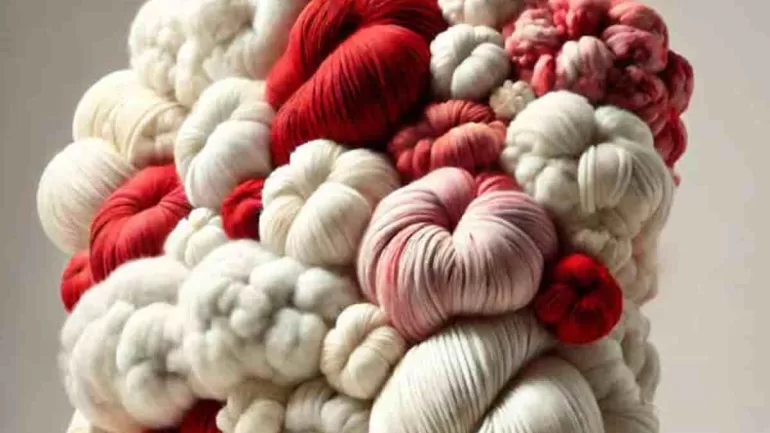ART REVIEW
Experience how innovative artists are blending tradition and technology to preserve cultural heritage in the age of AI. Explore a new era of artistic expression.
BY KAZEEM ADELEKE, ARTCENTRON
GLENDALE, CA- What happens when the very tools we create to preserve history also have the power to erase it? This is the central question posed by Reimagining Algorithms: Cultural Heritage in the Age of AI, a thought-provoking exhibition at ReflectSpace. The show is both a celebration and a critique, exploring how artists use artificial intelligence (AI) and emerging technologies to preserve, reinvent, and question cultural heritage. Curated by Ara & Anahid Oshagan and Monica Hye Yeon Jun, the exhibition places the immense power of AI under a cultural microscope. It highlights AI’s capacity for innovation while also exposing its role in erasure.
Artists and Their Contributions
Reimagining Algorithms features a dynamic lineup of artists who reimagine cultural heritage through a technological lens. Kamee Abrahamian, for example, blends film and performance with interactive installations to tell layered stories of identity and migration. In her piece Flesh, Immemorial, she uses digital technology to reconnect Western Armenians with their ancestral landscapes. The work reimagines descendants of genocide survivors within the physical spaces of their lost homelands. It revives ties with flora, fauna, spirits, and stories rooted in Western Armenia. This immersive artistic journey explores themes of land reclamation, diasporic healing, and cultural autonomy.
Game designer and artist Gabbah Baya presents Pomegranates, a narrative-rich game set in a future Gaza. The game highlights Palestinian dreams, joy, and memory instead of focusing on loss. It acts as a living archive, using 3D modeling to recreate destroyed landmarks that once held deep cultural and emotional value. In this piece, Baya transforms grief into an empowering narrative, reinforcing how digital art can be both resistance and remembrance.
Jamaican-born LA artist Yrneh Gabon uses the dragonfly as a potent symbol in his installations. First emerging in his work during California’s 2016 drought, dragonflies represent fragility, adaptability, and environmental resilience. They now carry new weight as metaphors for cultural survival amid ecological and social stress. Gabon’s bold, politically charged work addresses cultural suppression and environmental injustice, using paintings and sculptures as a platform for activism.
One Who Looks at the Cup

Mashinka Firunts Hakopian, Atlas Acopian, and Lara Sarkissian collaborate on Բաժակ Նայող (One Who Looks at the Cup). This bilingual AI-driven project modernizes Armenian coffee reading traditions. The artists use a dataset built from community-submitted stories and imagery to perform readings in both Armenian and English. The project actively resists algolinguicism—a form of bias in AI that marginalizes non-dominant languages—and reclaims digital space for intuitive, ancestral wisdom.
Korea-based artists Sung Min Jang and Seung Jun Seo, with Woo Seok Son, and the collective XYZ contribute works that bridge East Asian traditions with cutting-edge digital innovation. They confront the unresolved trauma of Japan’s colonial violence by honoring the memory of “Comfort Women”—Korean victims of wartime sexual slavery. Through video installations and immersive media, these works reveal how art and technology collaborate to recover suppressed narratives, ensuring cultural wounds are neither forgotten nor repeated.
Technology’s Dual Role
Reimagining Algorithms: Cultural Heritage in the Age of AI highlights technology’s paradoxical nature. On one hand, AI is a powerful tool for reinvention. Artists and communities can use it to generate new interpretations of traditional crafts, build comprehensive digital archives, and preserve traditions for future generations. This reimagining of cultural heritage allows for new forms of expression and documentation.
On the other hand, these same systems can be a weapon. For the curators, AI is not inherently good or bad—it’s shaped by the hands and minds that wield it. The exhibition demonstrates how algorithmic violence can erase online archives, manipulate historical narratives, and enforce cultural homogenization. This dual perspective is crucial for understanding the future of cultural heritage.
Expanding the Dialogue Through the PassageWay
The exhibition extends into the PassageWay, where documentation reveals severe threats to cultural heritage. Simon Maghakyan’s meticulous research, supported by the Caucasus Heritage Watch initiative, exposes the systematic destruction of Armenian cultural artifacts in Artsakh/Nagorno-Karabakh. Maghakyan’s work uses photographic and satellite evidence to document the targeted erasure of centuries-old monasteries and cemeteries. He states, “Our work is about more than just documentation; it’s about using technology to bear witness to history and prevent its erasure.”
The exhibit also draws attention to the ongoing destruction of heritage in the Gaza Strip. It underscores the universal urgency of safeguarding cultural memory during conflict. By linking creative renewal with cultural erasure, the show forces urgent questions about our responsibility to protect cultural heritage.
Preserving Cultural Heritage in the Age of AI
Reimagining Algorithms: Cultural Heritage in the Age of AI is a powerful reminder that AI is not a neutral tool; the values of those who wield it determine its impact. The exhibition asks a critical question: as we increasingly document ourselves digitally, who controls these archives? And how do we prevent loss when platforms shut down or algorithms change? The future of cultural heritage ultimately depends on whether we use algorithms to preserve diversity or risk its erasure.
- Featured Image: Sung Min Jang, Unbloomed Flower: Silent Outcry, Acrylic on canvas, 44 x 44 inches, 2025
Reimagining Algorithms: Cultural Heritage in the Age of AI on view at ReflectSpace Gallery through November 2, 2025
